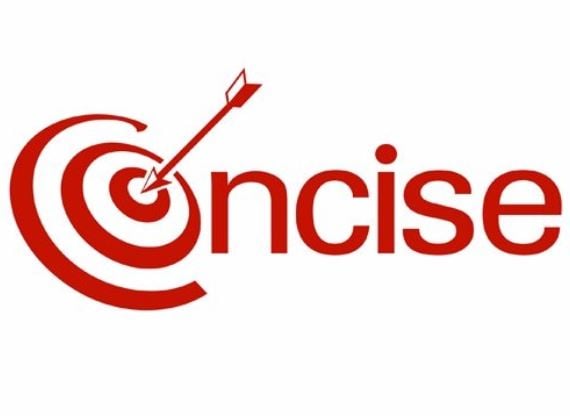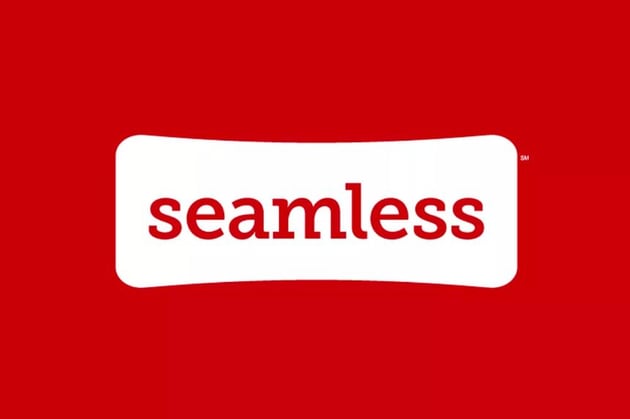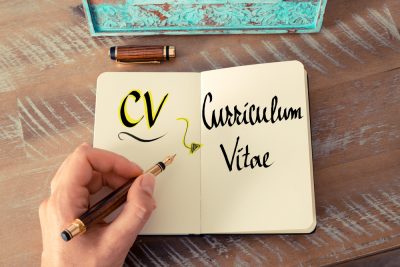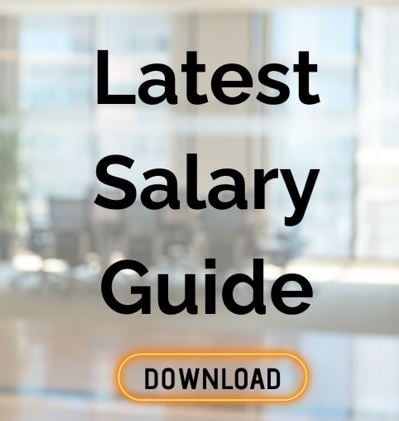Despite the continuing advancements in technology, with the rising use of videos, behavioural testing and online platforms in recruitment, our experience tells us that most perspective employers are still happy looking at a CV as the gateway to initially screening of a candidate's ability.
Research says that on average, someone reviewing a CV, looks at it for between five and seven seconds.
That's not long is it? So you'll understand from this how critical it is to get your CV right, which is why we're going to run through 10 key 'must haves' to help you.
1. Keep the Design Simple.

Do not spend ages crafting a CV in fancy hieroglyphics with various font sizes, types and colours, with things flying into it from different directions.
A simple word document which engages the reader immediately with clear, readable, standard format on white paper with plenty of white space.
Think about what you would want to see if you were reviewing CV's. Here are some key tips from our experience:
-
Lines should be no more than one and a half centimetre gaps
-
Use bold, italics, and underlining very sparingly, but consistently.
-
It should be portrait in orientation
-
Use a basic modern font like Arial or Times New Roman
-
Keep it to one colour and a maximum of two font sizes.
-
Keep it to 2 pages, as research shows this to be the most effective length.
-
Don't include photos. Stats show that 88% of CV's with photos on get rejected.
You may have many creative talents to bring to the floor and showcase, but this isn't the time to show it!
2. List Events in Chronological Order.
Start with your most recent experience in your work summary.
Make sure you display dates (from and to), your employee that you worked for and your job title(s) within that company. Outline your key responsibilities and successes in the role. Make sure you showcase how you've exceeded targets, how you've increased company profit and revenue. Display that as a success and note that on your CV, it's really important.
3. Keep it Concise and Factual.

There will be temptation to put down every single duty, success and responsibility that you have taken... but don't do that.
As stated, it shouldn't be more than two pages in total, because people initially do skim read your CV. So it's not a job spec, you're just wanting to get enough across to show how much value you can add to the organization.
Stick to talking about key achievements and what you did to reach them. Seems obvious, but keep it 100% accurate.
If you're called into an interview, the prospective employer will undoubtedly be discussing the detail of your CV and what you've put down on paper. They may ask you to substantiate the point, and if you can't, leave it off the CV. Nothing worse than being asked to talk about something, for the interviewer to then realise that your part wasn't actually as involved as you've made out on your CV.
4. Use Stand Out Words.
Words Have Power!
You must include stand out words on your CV. Our recent blog gives you 5 great examples.
Keep in mind how long someone's potentially going to look at your CV. They're going to focus on keywords that they see on there.
Serious about developing your Career?
Sign up for our blogs and advice here
5. Include a Professional Summary.
Include a brief outline on yourself as an opening paragraph to set the scene. This can touch on career objectives, key successes, achievements, specialisms and transferable skills learned, aiming to give perspective employers an overview of who you are and what you're all about. Think of it as your opening sales pitch. You have one chance to grab the reader's attention, as we keep saying, so try and bring out how great you are, and what a good potential employee you are for the organization.
Some prospective employers might not read past this paragraph, so it is key. If they see what they like there, they might just think, "Yeah, bring this person in."
You should tailor this profile to every job you apply for by reviewing the job spec, highlighting special qualities that match you to the role.
Aim to keep this personal statement short and sweet, no longer than a few sentences to make the most of this section.
You should try address the following:
-
Who you are
-
What you can offer the company
-
What your career goals are
6. Make it Seamless

What we mean by this is that your CV can't leave significant unanswered questions.
If the interviewer or employer spots a sizeable gap in your career history without any explanation, assumptions will be made. I think historically, people have feared that they shouldn't include this information on a CV, but it's really important to, so that the employer knows why you've not been working, and doesn't think that you've necessarily not been doing anything to further your career and develop your skill set.
One of the benefits of engaging with an agency is that we, a lot of the time, encourage having a conversation with the client to discuss reasons why there are gaps on a CV. Obviously sometimes it may be more than just a sentence to explain why you've potentially had a year off work, and that's something we have a consultative approach to with candidates and clients so we can talk that through.
7. Include Qualifications

You must include qualifications, education, training, and development. These usually come near the end of the CV, but if some qualifications are essential for the job and make you more marketable, include them in the profile professional summary we talked about in point five.
You need to list professional and academic qualifications, degrees, any executive programs, give them subjects, ward, and body and the year, but obviously not any memberships or anything you've paid for. Include skills, such as languages, technologies, or vocational training. Again, anything, which you believe would showcase you and your ability to do the role.
8. Include Personal Information.
What we mean by that is, include your name, your address, your telephone number and e-mail address. If you have a website that will add value to your application, add that too.
If you have a portfolio for a marketing or a design role, make sure you include that so that can back up your CV.
There's every chance your CV could get split up in a paper format, so make sure you include your contact details on every page. Don't forget to obviously use a professional e-mail address, none of the ones you set up when you were 13-years-old with a sense of humour that maybe the employer wouldn't quite get.
9. Use Power Verbs

We spoke in Point 4 about standout words, but we also need to make sure that we're including standout verbs.
If you want to land interviews and get your CV past that initial stage, you really need to get plenty of verbs to describe the actions you take in the workplace to provide value to your colleagues and your customers. So including power verbs to boost your CV, is very important. We've actually got 10 good examples in a blog we wrote for you here.
10. Proof Read!
This is really important!
Sounds like common sense but the number of CVs which get dismissed because of basic, grammatical, or spelling errors is phenomenal, so don't make this mistake.
73% of executives said they ignore a CV if there are more than one error, and 40% do if there's even one mistake. Get it proof read by a friend, a relative, a colleague or quite simply use spell check.
What Next?
Here at Lucy Walker Recruitment, we have been helping job seekers with their career journey for over 30 years.
Would you like our help? Call one of our experienced consultants in Leeds on 0113 367 2880 or send an email here.
Also why not subscribe to our blog to keep up to date with the latest tips.





.jpg)










.png)






